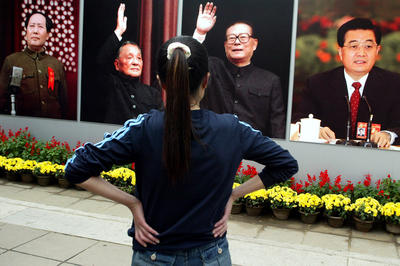China started a new revolution by adopting a ‘crossing a river by feeling the stones’ approach over 30 years ago, and gradually found a new path towards socialist modernisation. ‘China’s road’ may be described, in brief, as the development of a unique state system, which combines the Chinese socialist system and traditional market economy, including the ways of maintaining political stability and constantly improving people’s livelihoods and the efforts at handling the relations between China and other countries.
China’s road is characterised by gradual domestic reform and opening up to the outside world under strong governmental control. China has seized the economic opportunities presented by globalisation, and has maintained rapid economic growth to quickly develop into a large manufacturing and trading country. Throughout this process, China has striven for a peaceful international environment and refrained from intentionally making a big impact on the current international order.
China follows a path of evolutionary reform. This allows it to manage effectively the interrelationships between economic restructuring, social reform and political restructuring, and balance the competing demands of reform, development and stability. Crucial to this strategy is the establishment of the socialist market economy, which is strikingly different from the Soviet model, and models of Western countries. The new system gives play to the role of the market mechanism while emphasising the government’s strong macro-regulatory functions. Political restructuring is carried out steadily to improve administration, the legal system and democratic governance. The achievements to date offer proof that China is following a unique and successful path to development.
China’s road has led to a miracle in the history of the world economy, of development without any external expansion or egregious internal conflicts. There are, however, many challenges that have to be faced during this period of social transformation.
Extensive economic growth results in increased consumption of material resources, and to environmental deterioration. China’s export-oriented economic development pattern is unsustainable. Domestic demand is insufficient. Gaps in income, in rural–urban development, and between regions are continuing to widen because of unbalanced economic and social development. There are problems in social security, medical and health services, education and housing. Corruption remains a serious problem and there is also the occasional issue of people’s rights and interests being infringed.
The ideas of a creating a harmonious society and taking a scientific approach to development are key tools for dealing with the contradictions and problems which have accumulated over the past 30 years. These concepts are written in the Constitution of the Chinese Communist Party (CCP) and are reflected in the 12th Five-Year Plan. This shows that the CCP is committed to finding the best path to development.
A huge effort is being made to promote scientific development and social harmony. The CCP has emphasised an all-round approach to development which gives weight to economic, political, cultural and social concerns. Under this approach, improvements can be made to the socialist market economy while building a domestic demand-based economy and fostering a harmonious society. To ensure rapid and sustainable economic growth, the pattern of development and the mode of economic growth have to be transformed, building a resource-conserving and environment-friendly society.
Reforms are being carried out to ensure social equity and justice, prerequisites to sustainable development. Efforts are being made to achieve the goal of common prosperity and ensure that development is for the people, by the people, with the people sharing its fruits.
Terms such as the rule of law, inner-party democracy, primary-level democracy, and people’s democracy point the way forward for improving socialist democracy. The value of China’s road lies in the fact that it expands our understanding of the principles of social development and the different ways that a nation-state can modernise. China’s success suggests that there is no universally applicable or immutable development model.
Some people fear that ‘China’s model’ will take the place of the Western model, and warn against its export around the world. But China has no intention of exporting its model. It is still in an early stage of socialist development, and per capita GDP is only about US$3,800. China is determined to pursue a road of peaceful development to attain its goal of building a moderately prosperous society by 2020. The China road includes such important aspects as opening to the outside world, international cooperation and peaceful development. The ideas of creating a harmonious society and a harmonious world are rooted in the core value of ‘universal harmony’ in Chinese culture. Any practice of exporting a so-called model would violate this principle.
China’s road continues to evolve and change. Whether China’s socialist ideal and its road design are of universal significance remains to be proved over time and tested in practice.
Zhao Boying is Professor and Director General, Department of Culture and History, Chinese Central Party School, Beijing.
This article was published in the most recent edition of the East Asia Forum Quarterly, ‘Governing China’.

